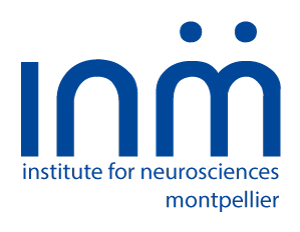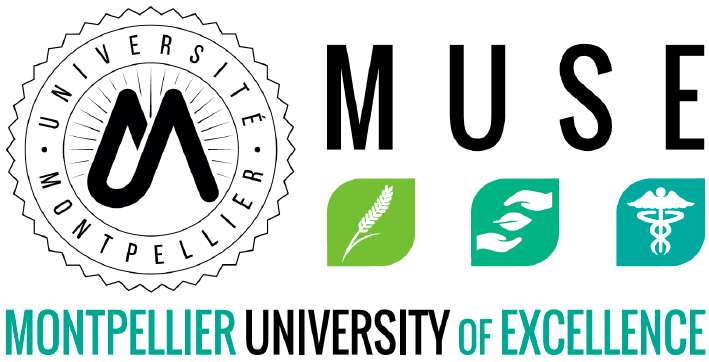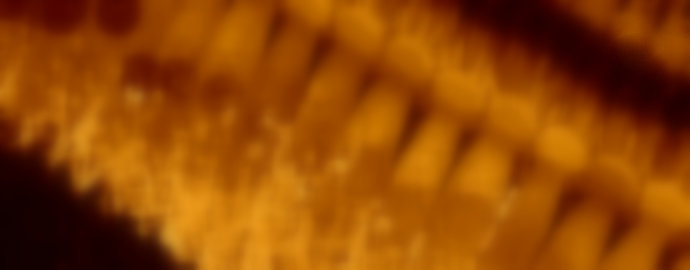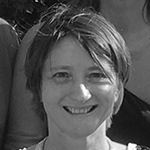The non-syndromic hereditary optic neuropathies, including primarily the Dominant Optic Atrophy (DOA, prevalence 1/20 000) and the Leber Hereditary Optic Neuropathy (LHON, prevalence 1/30 000) are leading causes of hereditary blindness in Western countries. They are characterized by a degenerative process of the retinal ganglion cells (RGCs), with consequently a loss of the optic nerve fibers leading to the impairment of the visual transduction from the retina to the brain. Today, there is no treatment to prevent the progress of the degenerative process.
 DOA, which is the subject of our investigations, is clinically characterized by progressive bilateral loss of the central visual field and vision colors, and the presence of papilla pallor at eye examination, without other retinal alteration. At OCT patients present a significant reduction of the retinal nerve fiber layer, mainly at the optic papilla. Electrophysiological measurements evidence a significant decrease of visual evoked potential (VEP) and the maintenance of electroretinogram (ERG), reflecting a specific functional impairment of the optic nerve.
DOA, which is the subject of our investigations, is clinically characterized by progressive bilateral loss of the central visual field and vision colors, and the presence of papilla pallor at eye examination, without other retinal alteration. At OCT patients present a significant reduction of the retinal nerve fiber layer, mainly at the optic papilla. Electrophysiological measurements evidence a significant decrease of visual evoked potential (VEP) and the maintenance of electroretinogram (ERG), reflecting a specific functional impairment of the optic nerve.
Eight loci responsible of Optic Atrophy have been identified, 5 for of a dominant form (OPA1, 3, 4, 5 and 7), two for a recessive form (OPA6, OPA7 or ROA1, ROA2) and one associated to chromosome X (OPA2). To date, only three genes are known, (OPA1, OPA3 and OPA7 or TMEM126A), all encoding proteins associated to the inner mitochondrial membrane, as the ND1, ND4 et ND6 proteins, encoded by the mitochondrial genome, which are mutated in LHON. The convergence of all these protein localization set inherited optic neuropathies among mitochondrial diseases. OPA1 is the major gene of DOA, representing approximately 70 % of non-syndromic patients with genetic diagnosis. OPA1 encodes a mitochondrial dynamin localized in the inter membrane space of mitochondria. Fundamental studies on HeLa cells and pathophysiological studies on a collection of patient fibroblasts showed that OPA1 functions concern the dynamics of the mitochondrial network, the membrane potential maintenance, the cell respiration, the apoptotic process and the maintenance of the mitochondrial genome. These different functions are associated with singular OPA1 isoforms, resulting from alternative splicing of exons 4, 4b and 5b. Despite the accumulation of knowledge about OPA1 functions, it is still not known which one is limiting and responsible for the RGC death. Nevertheless, in OPA1 non-syndromic patient fibroblasts, as well as in Opa1+/- mouse models, it has been clearly demonstrated that OPA1 expression levels are systematically 50% reduced, suggesting that the mutated allele is counter-selected and that OPA1 haplo-insufficiency, although well tolerated in other cell types of the body (absence of secondary clinical symptom in most patients), represents the central and princeps mechanism of DOA pathophysiology.
Major achivements
- Identification of OPA1 as the principal gene responsible for Dominant Optic Atrophy (Delettre, 2000 and 2001)
- Localisation of OPA1 in the mitochondria (Olichon 2002)
- First characterization of OPA1 functions in mitochondrial dynamics, cristae structure and apoptosis (Olichon, 2003)
- Contribution to the discovery of mutations in OPA3 gene in DOA + cataract
(Reynier 2004) - Contribution to the characterisation of the first syndromic DOA patients (Amati-Bonneau, 2005)
- Characterization of DOA pathophysiology (Kamei, 2005, Olichon, 2007)
- Characterization of the function of OPA1 isoforms and cleavage
(Olichon, 2007; Baricault 2007) - Identification of the genetic basis of a reversible form of DOA (Cornille, 2008)
- Participation to a multi-centric analysis of syndromic DOA patients
(Amati-Bonneau, 2008) - Characterization of OPA1 function in calcium clearance in retinal ganglion cells (Dayanithi, 2010)
- Characterization of OPA1 involvement in mitochondrial genome maintenance (Elachouri, 2011)
- Characterization of OPA1 (Sarzi, 2012) and Wfs1 (Bonnet in prep) mouse models.
Ongoing investigations
1. Medical and genetic diagnosis of inherited optic neuropathies, at the Centre National de Référence Maladies Rares Neurosensorielles, CHU Gui de Chauliac, Montpellier, with Dr I. Meunier and Dr A. Roubertie.
- Clinical studies on DOA and Wolfram (WS) patients.
- Investigation of novel genetic determinants of inherited optic neuropathies.
2. Patho-physiology of DOA and WS :
- Characterization of mitochondrial defects in a collection of patient fibroblasts.
- Characterization of OPA1, OPA3 and Wfs1 mouse models of DOA and WS.
3. Fundamental studies of the OPA1, OPA3 and Wfs1 proteins :
- Involvement in the mitochondrial physiology and the maintenance of the mitochondrial genome.
- Involvement in the apoptic process.
4. Therapies for inherited optic neuropathies :
- Pre-clinical gene therapy studies with AAV2 vectors on mouse models of DOA and WS diseases.
- Pharmacological therapy for DOA, based on mitochondrial activity stimulation, screening of drugs active on patient fibroblasts and on OPA1 mouse model.
Major publications
Piro-Mégy C, Sarzi E et al., J Clin Invest. Sep 24, 2019
Delprat B et al., Cell Death Dis. Mar 6;9(3):364, 2018
Sarzi E et al., Sci Rep. Feb 6;8(1):2468, 2018
Jagodzinska J et al., J Vis Exp. Sep 22;(127), 2017
Gerber S et al., Brain. Oct 1;140(10):2586-2596, 2017
Sarzi E et al., Hum Mol Genet. Jun 15;25(12):2539-2551, 2016
Buret L et al., Cell Death Discov. Mar 7;2:16017, 2016
Buret L et al., Cell Death Dis. Apr 14;7:e2187, 2016
Angebault C et al., Am J Hum Genet. Nov 5;97(5):754-60, 2015
Roubertie A et al., J Neurol Sci. 349(1-2):154-60, 2015
Bonnet-Wersinger D et al., PLoS One. 9(5):e97222, 2014
Vidoni S et al., Antioxid Redox Signal. 19(4):379-88, 2013
Sarzi E et al., Brain. 135:3599–3613, 2012
Elachouri G et al., Genome Res. 21(1):12-2, 2011
Delettre C et al., Nat Genet. 26(2):207-10, 2000
Collaborations
- Pr. Pascal Reynier, Pr. Dominique Bonneau, Pr. Vincent Procaccio, Pr. Dan Miléa, Pr. Patrizia Amati-Bonneau, CHU d'Angers.
- Dr. Jean-Michel Roizet, Pr Josseline Kaplan, Dr. Agnès Rotig, Hôpital Necker Enfants Malades (Paris).
- Dr. Jeremy Fauconnier, Dr. Alain Lacampagne, Inserm U1046 (Montpellier).
- Pr. Patrick Yu-Wai-Man et Pr. Patrick Chinnery, University of Newcastle upon Tine (UK).
- Pr. Valerio Carelli et Pr. Michela Rugolo de U. Bologna (Italie).
- Pr. Antonio Zorzano de U. Barcelona (Espagne).
- Dr. AbdelHamid Barakat, Institut Pasteur du Maroc.
Fundings





![]()
![]()























